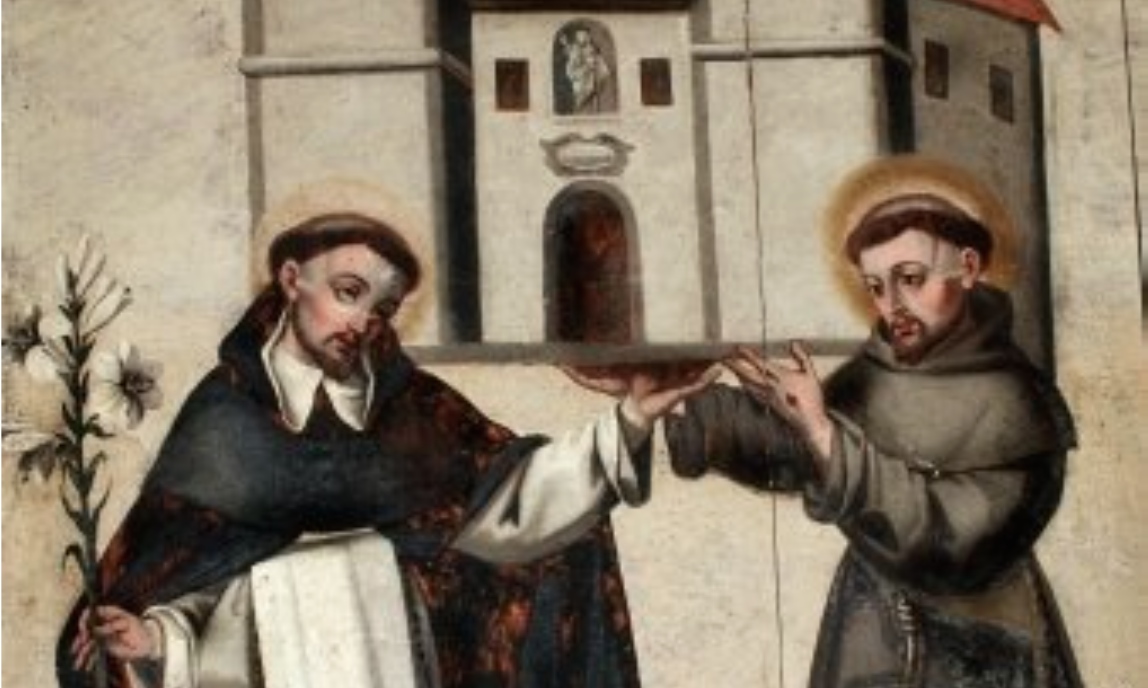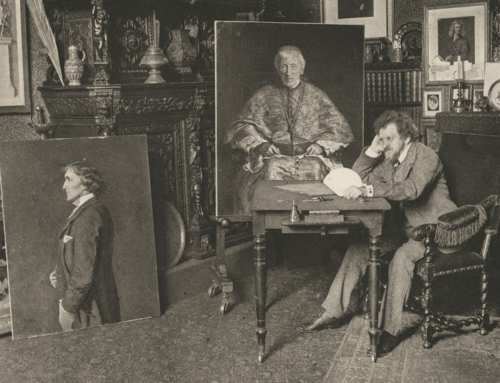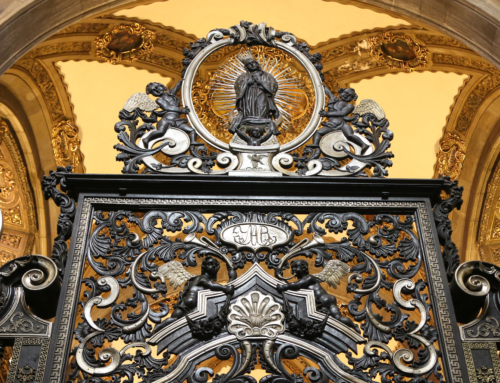As he walks about the Lateran Basilica, he finds himself enamored of its majesty and nobility. Suddenly, and without warning, the earth beneath the structure begins to move and fall away, threatening to collapse that wondrous edifice: the Lateran Basilica is toppling before his very eyes! What could possibly be done to prevent this calamity? As the swaying Church begins to lurch, his heart despairs within him.
Pope Innocent III, the young but adroit Bishop of Rome, experienced just such a nightmare, one which threatened to disturb not only his sleep, but even his whole pontificate.
But the dream did not end there. Lo! a rescuer emerged. A bird? a plane? no, a beggar! This valiant vagrant hurled himself beneath the corner of the Church and steadied the Basilica upon his back. The Pope fell to his knees in thanksgiving for this hero, a humble man dressed in rags.
Although his dream ended here, the image of the beggar remained etched upon his mind, with the Pope sensing that there was more to his dream than excitement, anxiety, or bad pizza. The memory remained with him until one day that very same man actually walked up to his throne to beseech a blessing upon him and his upstart community of friars. Since the story of Pope Innocent’s dream that comes down to us describes only “a beggar in rags,” we do not know whom it might have described in particular. Naturally, the Franciscans and Dominicans lay competing claims to this premonition in their respective foundation narratives (as in Thomas of Celano’s second Life of St. Francis and Cardinal Orvieto’s Legend of St. Dominic, respectively). Is it possible, though, that the man of Innocent’s dream was in fact neither founder, but a symbol of “the apostolic man”?
The one Gospel inspired these two men, Francis and Dominic, to give their lives whole and entire to the imitation of Christ, like the apostles of the early Church. Both saints heartily embraced the evangelical counsels, practicing what they preached with complete abandonment to the Lord. Their followers became the first mendicant friars, a new movement springing from the heart of the Church to bring conversion, peace, and joy to the world through radical poverty and itinerant preaching— each with with their own particular charism and form. These monks-on-the-move reinforced the structural integrity of the Church just as the foundations of society were beginning to rock and reel under the stress of major changes and upheavals.
These men, imitators of the apostles, assumed the role of the preacher and took up the mantle of Christ’s own most cherished friends and associates. The Basilica of St. John Lateran is named for both the apostle and evangelist John as well as the martyr and preacher John the Baptist. Who better might we compare to these two patrons than St. Francis and St. Dominic, who donned the same rough fabric as the forerunner and proclaimed the self-same Gospel as the evangelist? These four men, all holy preachers, are united in their lives of radical abandonment to Truth and Love.
Today we honor the foundation of the Cathedral of Rome, the church that Pope Innocent III saw in his dream, “the mother and head of the churches of the city of Rome and of the whole world” (Mater et caput ecclesiarum omnium urbis et orbis), entrusted to the patronage of the Holy Savior and his beloved friends John the Baptist and John the Evangelist. As we celebrate the mother church of Holy Mother Church, let us ask God for the grace that he gave to St. John the Evangelist and St. John the Baptist, and to St. Dominic and St. Francis: the grace to become living stones (1 Pt 2:5). This blessing is not geared toward becoming wonder-working ascetics, nor is it the power to halt a collapsing building or society. It is the docility to fulfill one’s vocation, by the grace of God, with love and devotion. It is the magnanimity to give everything to God through living out our roles as fathers, mothers, priests, religious, preachers, teachers, missionaries. It is love.
“Love constructs; only love constructs!” said Pope St. John Paul II, reflecting on the relationship between the temple of living stones and love. He continued: “For Rome, for my new Diocese, and at the same time for the whole of the Church and for the world, I desire love and justice. Justice and love, so that we may be able to construct.” What are we constructing? We are constructing the Temple that is the Body of Christ:
Each one has his place in this building up of the Body of Christ, just as each one has his place and his task in the building up of the common good of men, of society, of the nation, of humanity. The Church is building herself up in the world. She is building herself up with living men. At the beginning of my episcopal service, I ask each of you to find and define his own place in this work of construction.
John the Baptist was the forerunner; John was an apostle and evangelist. The place of Saints Dominic and Francis was to to bolster the Church by their apostolic way of life, a way of chaste, obedient, and simple love. Today, we are all called to love, for love is our vocation, our perfection, our sanctification–and that of the whole Church.
✠
Image: Francis and Dominic holding up Santuario de Nosa Señora das Ermidas







